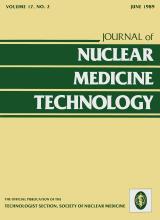Abstract
Quantitative circumferential analysis of thallium-201 (201Tl) myocardial stress/redistribution studies requires the operator to select the apex of the heart on the stress and delayed images. The impact of possible selection inconsistency on the contents of automatically generated reports from such a quantitative circumferential analysis program were systematically evaluated. The selection of the apex by 5, 10, and 15 degrees in both a clockwise and counterclockwise direction on anterior, LAO, and steep LAO projections of 23 patient studies were intentionally altered. Original automatically generated reports and reports using the distorted data were compared, and the incidence of change in the written reports were noted. Up to 30% of the reports were altered with as little as 10° of inconsistency in apical placement, and altered reports were seen with as little as 5° of intentional misplacement. In addition to accuracy in placement of the apical reference point, consistency in selection is essential, and review of stress/delayed distribution profile curve misalignment is necessary prior to the generation of automated reports.







